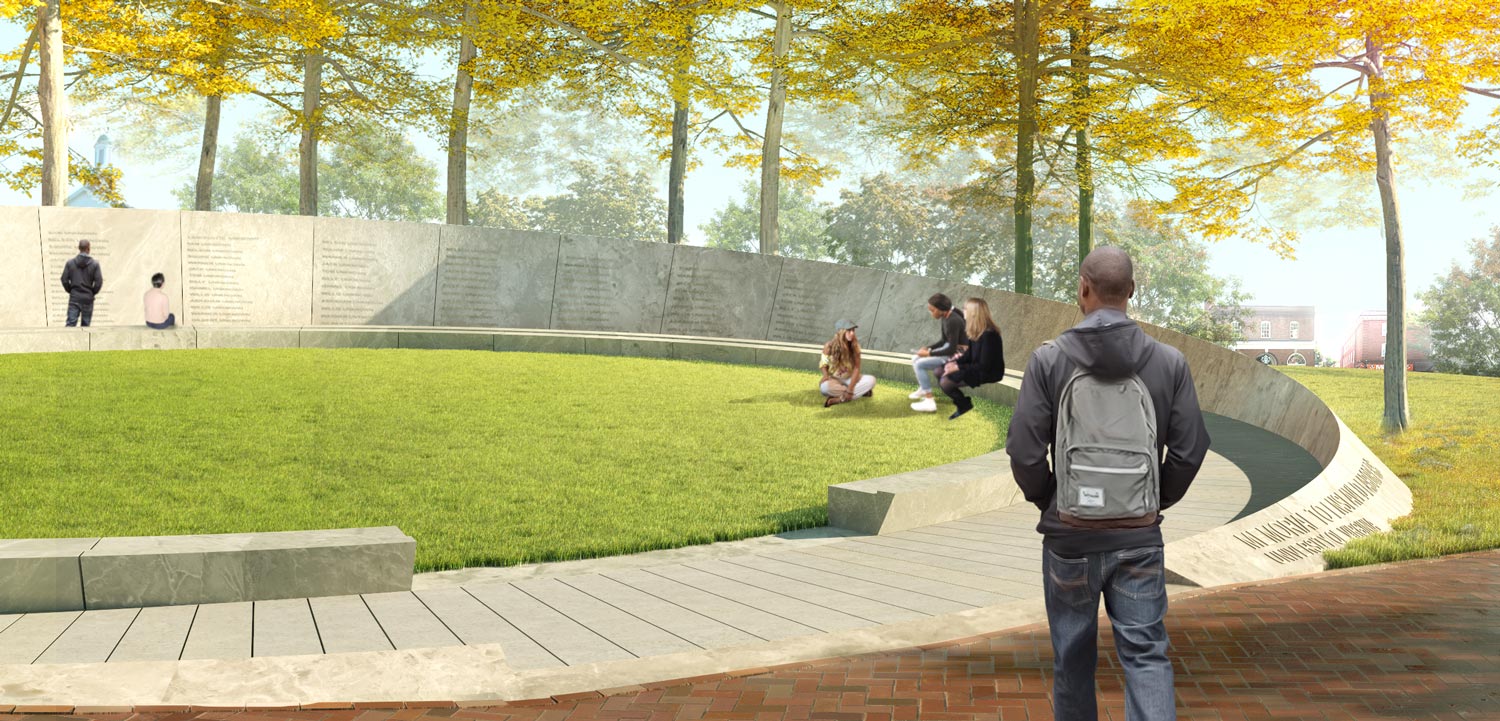Plans to install a Memorial to Enslaved Laborers at the University of Virginia received a significant boost recently when the University approved an allocation of strategic funds for the project.
At its August meeting, UVA’s Board of Visitors endorsed a plan proposed by President Jim Ryan to allocate $2.5 million from the Strategic Investment Fund to establish a matching fund for private gifts to the memorial construction fund.
“Honoring the enslaved laborers who built this University is a crucial step in fully recognizing our history as a university,” Ryan said. “I am delighted that we will be matching funds raised for this important memorial.”
A recommendation of the President’s Commission on Slavery and the University, the memorial’s design and location won approval in June 2017. Construction is anticipated to begin later this year and the memorial – to be situated on the grassy area between Brooks Hall and the Corner – is expected to be dedicated in the fall of 2019.
The board approved dedicating up to $2.5 million in strategic fund earnings for one-for-one matches of gifts and gift commitments of any amount for the memorial’s construction through Dec. 31, 2019.
“The $2.5 million in matching funds is a significant development in the process of making the Memorial to Enslaved Laborers a reality,” said Dr. Marcus Martin, UVA’s vice president and chief officer for diversity and equity. Martin also served as co-chair of the President’s Commission on Slavery and the University.
“It is our hope that the Memorial to Enslaved Laborers will provide a highly visible and accessible space for the UVA and local community to come together to reflect, honor and heal,” Martin said. “The memorial will honor the enslaved who lived and worked on Grounds, as well as their resilience in the face of violence and oppression. I appreciate the work of the President’s Commission on Slavery and the University, UVA students, staff, faculty and alumni, and the many community members who participated in the design process and contributed in many other ways.”
The memorial is a signature recommendation of the slavery commission, established by former President Teresa A. Sullivan in 2013 to explore and recognize the University’s historical relationship to slavery and enslaved people. Its design was a product of substantial public outreach to members of the University community, alumni and local residents. The Boston firm Höweler+Yoon led the design process, along with Frank Dukes, co-founder of University & Community Action for Racial Equity and past director of the Institute for Environmental Negotiation in the UVA School of Architecture; alumna Mabel O. Wilson, an architectural historian at Columbia University; and Gregg Bleam, a landscape architect who has taught at UVA and worked in and around the University for about 30 years.

“Creation of the memorial is an important step toward understanding and honoring those who were responsible for so much of the early work that sustained the institution,” said John Macfarlane, a former member of the Board of Visitors who has led fundraising efforts. “The memorial also will serve as a reminder of our imperfect past and that we must learn from our failings. This fund underscores the University’s commitment to this process and to the importance of a more complete understanding of our history.”
The memorial design features a circular stone wall, open at one section, which rises from the open green area northeast of the Rotunda. The design is inspired by the idea of broken shackles. Inside the circle – known as the Freedom Ring – visitors will find the names of enslaved laborers inscribed on the memorial’s vertical wall.
The memorial’s inner circular lawn is envisioned as a site where performances, classes or commemorative events could be held. Adjacent to a circular bench, visitors will find a stone shelf featuring water running over an inscribed timeline outlining the history of slavery at UVA.
Initial plans call for nearly 1,000 currently known names of enslaved workers to be inscribed on the polished stone interior wall, leaving space for additional names as research reveals more insight into the identity of the enslaved people who built and sustained the early University. Researchers have estimated that as many as 5,000 enslaved African-Americans worked on Grounds, beginning with construction of the Lawn in 1817 through the conclusion of the Civil War.
The exterior circular wall – to be made of Virginia Mist granite quarried in Culpeper, the same kind of stone used on the upper terrace of the Rotunda – will be textured, possibly suggesting human features to lend a realistic impression to the symbolic design. Artist Eto Otitigbe from Brooklyn, New York will design the exterior artwork.
Information about contributing to the memorial fund can be found here.
Media Contact
Article Information
August 30, 2018
/content/uva-establishes-matching-fund-advance-slavery-memorial

